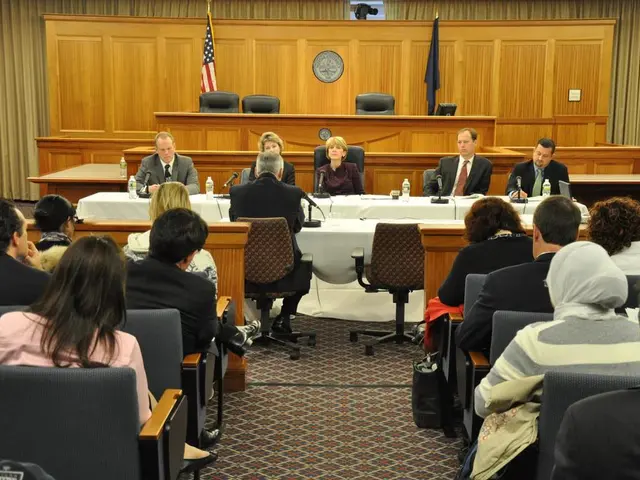Transforming into an Adaptive Knowledge Seeker: Strategies Revealed
In today's rapidly changing professional landscape, the ability to adapt and thrive in unfamiliar circumstances is more important than ever. This is where learning agility comes into play, a valuable skill that is highly sought after by organisations worldwide.
Agile learners are often selected for high-impact roles and entrusted with strategic projects due to their ability to succeed in varied circumstances. They thrive in uncharted territory and handle complex challenges without established solutions, making them invaluable assets in an ever-evolving business environment.
Empathy is a cornerstone of learning agility, helping agile learners seek out diverse viewpoints and engage with others. To improve self-awareness, they identify three words that they want others to associate with them in agile situations and use them as a guide. In challenging moments, they create a simple mind map to reflect on strengths, support, and areas for improvement. Self-awareness enables agile learners to understand their strengths, limitations, and the effect they have on others.
Developing learning agility is essential for career growth, relevance, and future leadership. Seek feedback by asking questions like, "How would you describe my impact?" and compare this with your intended impression.
Enhancing learning agility and improving understanding, self-awareness, and navigating newness require a combination of strategies that focus on both individual development and organisational support. Here are some practical approaches:
1. Experiential Learning: Engage in hands-on activities that move beyond traditional lectures, and follow them with detailed debriefing sessions. This can help employees build resilience and agility.
2. Segmented Development: Tailor training to needs, link learning to business goals, and provide opportunities for practice and experimentation.
3. Continuous Learning and Application: Offer stretch assignments, mentorship, and simulations where employees can apply what they've learned.
4. Technology Integration: Leverage digital platforms for automating tasks, assessing risks, and analysing real-time data for better decision-making.
5. Cultivate Self-Awareness: Implement reflective journaling or mindfulness exercises, establish regular feedback mechanisms, and develop a future-focused mindset.
6. Strategic Agility Mindset: Encourage leaders to think about potential weaknesses and be open to change, and ensure that all teams share a clear understanding of strategic agility and its contribution to overall objectives.
By implementing these strategies, organisations can enhance learning agility and improve employees' ability to navigate new situations effectively. The journey to becoming an agile learner starts with curiosity and courage. Agile learners are intentional about improvement, open to feedback, and eager to borrow and apply ideas from various sources. They are proactive in discovering differing opinions and are receptive to challenges to their thinking.
In conclusion, learning agility is a valuable skill in today's unpredictable professional landscape. By embracing discomfort, engaging in empathy experiences, and cultivating a beginner's mindset, individuals can enhance their learning opportunities and contribute to a resilient, mobile, and responsive workforce.
Agile learners, who excel in both personal growth and career development, are highly sought after by organizations due to their ability to navigate unfamiliar circumstances effectively. Engaging in strategies such as experiential learning, self-awareness cultivation, and continuous learning and application is crucial for individuals to develop learning agility – a vital skill for fostering continued education and self-development.




